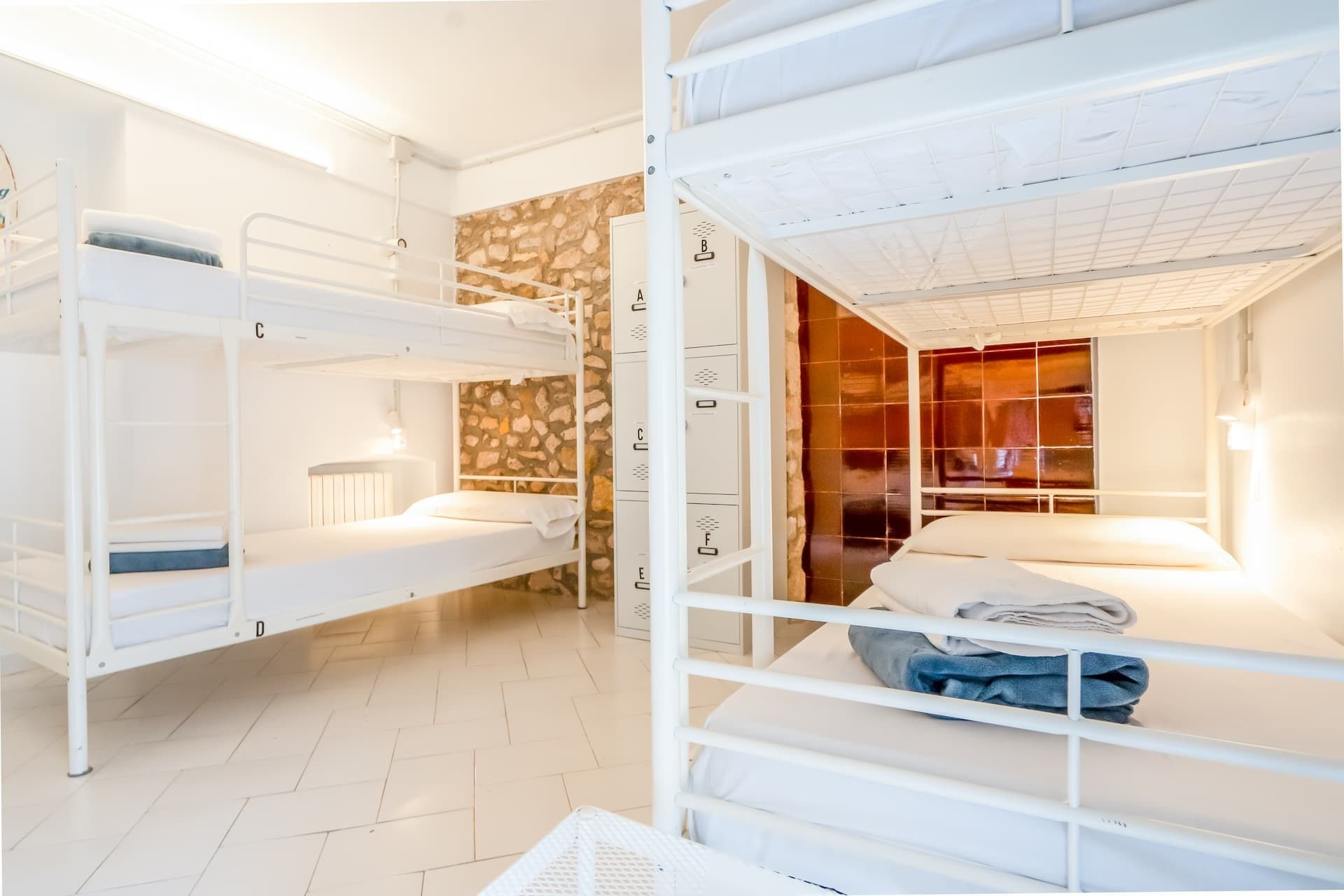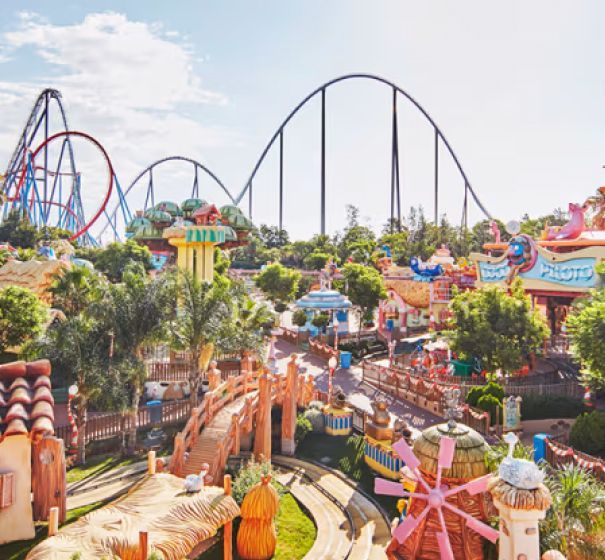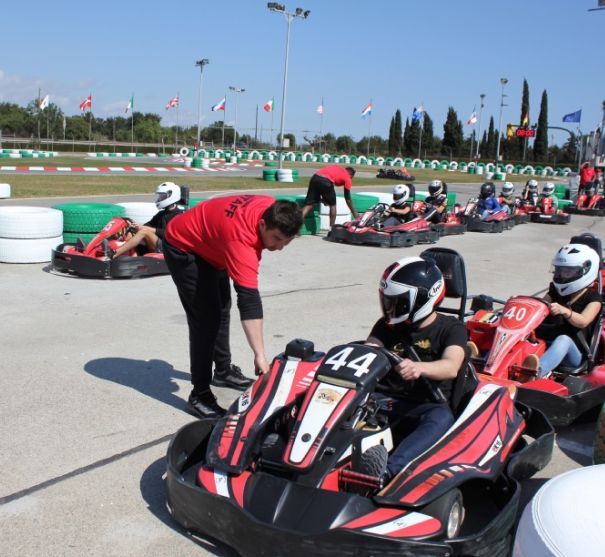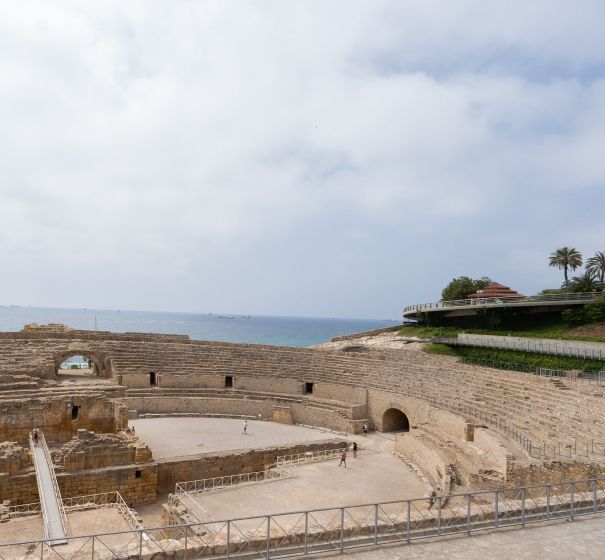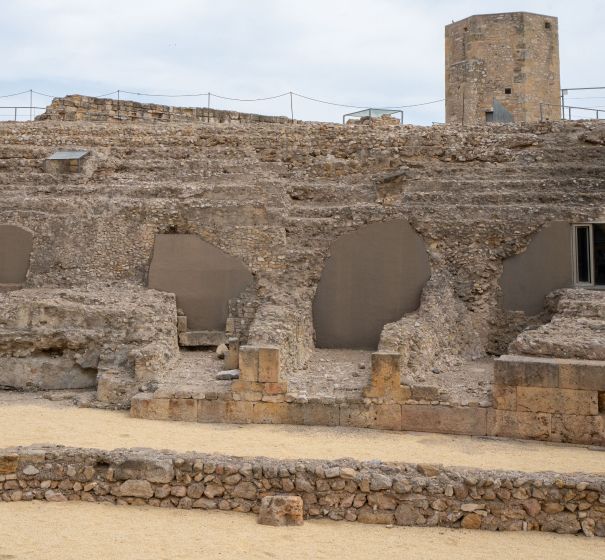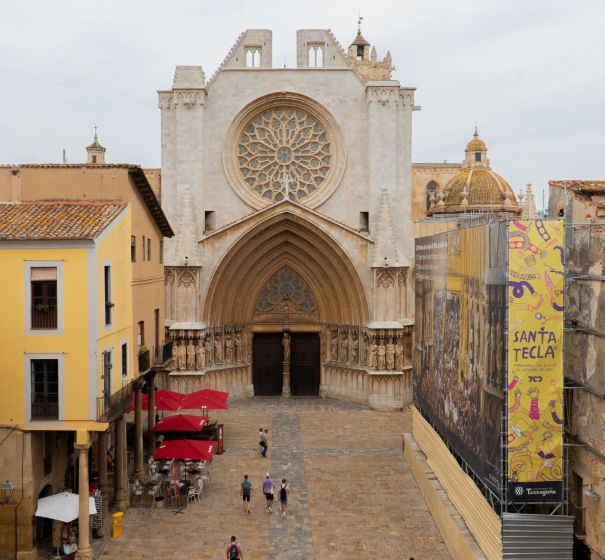Discover Tarragona
A city with history, flavor, and a thousand things to do.
Tarragona all year round
With over 300 days of sunshine a year and mild temperatures in every season, Tarragona always awaits you with something new to discover. History, trails, beaches, gastronomy, and fun: here every day becomes an experience.
Activities
Port Aventura World
Located in Salou, Port Aventura was the first amusement park in Spain and, without a doubt, the one with the most visitors each year.
Currently, PortAventura World encompasses two theme parks, PortAventura Park and Ferrari Land, and a water park, Caribe Aquatic Park.
Karting Salou
With over 50 years of experience, Karting Salou is a go-kart circuit suitable for all ages.
Specifically, it has a circuit for adults of over 900 m and another of 300 m for children under 14, adaptable to children between 4 and 6 years of age.
Routes
Parapet walk
The first thing that probably comes to mind when you think of the Camino de Ronda is the Costa Brava. However, the Costa Daurada also has a fascinating network of paths that, in the past, were used by the Civil Guard during their patrols.
There are different sections that pass through different towns in the province, but if you'd like to explore one close to Tarragona, we recommend the route that follows the path between Tamarit Castle and the city of Tarragona. It's a very simple itinerary, but also one of the most beautiful. Along it, you'll find some of the most beautiful coves on the Tarragona coast.
We suggest a circular route that begins along the Francolí River, right in Francolí Park. From here, you should ascend to the iconic Devil's Bridge and stop to learn about its history.
Erected in the 1st century, the renowned Les Ferreres aqueduct or Pont del Diable is just one part of an extensive canal system that supplied water to the city from the Francolí River.
It is approximately 217 meters long, with a maximum height of 27 meters and a width of almost 2 meters. The upper row has 25 arches, while the lower row has 11 arches.
After this stop, you should continue along the path to Sant Pere and Sant Pau, before finally returning to Tarragona. This route is ideal for exploring the biodiversity surrounding the Francolí River and understanding how the riparian forest functions.
The Tomb of the Green Ring
The Green Ring Walk follows the paths of the Tarragona Trails network. The paths are marked with yellow trail markers or, in some sections shared with trails of the Federation of Hiking Entities of Catalonia (FEEC), with white and red or white and yellow markers.
The entire route is 34 km long and begins in the Francolí River Park, following ancient paths until reaching the Gaià River. From there, the walk continues to the coast, home to the ancient fortified village of Tamarit and a spectacular stretch of coastline.
The route then passes through the Marquesa Forest, a protected area, and passes beautiful coves such as Cala Becs and Cala Fonda. It continues toward the large Playa Larga, beloved by the residents of Tarragona, and finally reaches Playa del Miracle.
Along the way, you'll encounter historic farmhouses and other points of interest, offering a route filled with charm and natural beauty. It's also worth mentioning that the return trip along the coast is ideal for pedestrians, while the route to Gaià can be done on foot or by bicycle.
Places of interest
The Amphitheater
The Tarragona amphitheater is a gem from the 2nd century AD. It's located just outside the city, near the Via Augusta and the port. Imagine, this is where the wild beasts disembarked for the shows! It's oval-shaped, and part of the seating is carved into the rock, while the rest rests on vaults.
It even has a church inside commemorating the holy martyrs who died there in the 3rd century. The Church of Santa Maria del Miracle was rebuilt in the Romanesque style in the 12th century. The amphitheater is in good condition, and many of its elements can be seen, as well as the foundations of the church.
The Roman Circus of Tarraco
Built at the end of the 1st century AD, another very interesting site is the circus. This was part of the provincial forum and is impressive. The building is built on a system of vaults that supported the tiers and allowed for circulation. It is very well preserved, and many of its original parts can be seen.
Next to the circus is the Praetorium, a Roman tower that served as a link between the forum and the city. In the Middle Ages, the tower served as a palace for the kings of Aragon and, later, as a prison. Quite an incredible historical mix, isn't it?
Cathedral of Saint Mary
The Cathedral of Saint Mary is located in the upper part of the city, on the site of the former temple of the provincial forum. It is Gothic in style and was consecrated in 1331. Originally built in the Romanesque style, the plans were later modified to make it larger and in keeping with the new style.
The cathedral has a Latin cross layout, with three naves, side chapels, a large central apse, and two smaller apses. There's also a cloister. Inside, you can visit the Diocesan Museum. Worth a visit!
Beaches
Of course, we can't forget the beaches along the Costa Daurada. They're perfect for a refreshing swim in the summer! If you don't want to travel far, you'll find 15 km of coastline in the city of Tarragona itself. You can also explore the numerous beaches in the area, both long and expansive, as well as charming little coves. There are options for every taste! Here are some recommendations.
Miracle Beach
Miracle Beach is the closest beach to the center of Tarragona. It's very close to the amphitheater and easily accessible on foot. However, if you prefer to reach it by car, there are several parking spaces available.
Miracle Beach stretches from Fortí de la Reina to the port of Tarragona and offers excellent services and facilities. It also has a fenced area where dog owners can enjoy the sea with their pets. It's the perfect beach to go with your friends.
Arrabassada Beach
L'Arrabassada beach is located about 2 km from the city center and is undoubtedly one of the most popular. While it can be reached on foot, there are parking areas nearby.
This beach is surrounded by low cliffs and has all kinds of services and beach bars for a perfect day at the beach. It also has a beautiful palm-lined promenade where you can play sports or walk a little. It's definitely an ideal beach for spending quality time with the family.
Cala Becs
Cala Becs, next to Roca Plana beach, is perfect if you're looking for tranquility. It's a little further from the city center than other beaches and is only accessible on foot, but the scenery is worth it.
Surrounded by the pine trees of the Marquesa Forest and the sea, it's located within a protected area, making it one of the few beaches on the Costa Daurada that's practically unspoiled. The perfect spot for a date with your loved one, I promise.
Gastronomy
Tarragona, a quintessential Mediterranean city, has a deep-rooted culinary heritage distinguished by its wide variety of fresh, high-quality products.
Among the highlights are the Tarragona red shrimp, local fish, seafood and rice dishes, and a wide selection of restaurants to delight in. Here's a list of dishes you can't miss during your visit to the city.
Romesco of Tarragona
Without a doubt, Tarragona's romesco is the quintessential Tarragona dish. It's made primarily with fish or seafood, although it can also be made with meat or poultry.
It's also a cold sauce that we use as an accompaniment to appetizers, fish, seafood, and meat dishes. The sauce is more popular everywhere than the dish, especially with calçots, but they complement each other and can easily be shared on the menu.
Romesco is believed to have originated on the boats of Serrallo, the fishing district of Tarragona, with the ingredients available at the time: garlic, dried bread, dried peppers, oil, salt, and wine. They used these ingredients in a mortar and pestle, then sautéed them in a pot. They added the fish they caught and made the stew they called romesco. Romesco cassola, with snails, is very popular in Tarragona.
Esmarris
Esmarris is a traditional dish from the Tarragona coast, although more specifically associated with the town of Creixell.
Its origins date back to humble times, as it was created on fishermen's boats with the remains of fish they couldn't sell. It's usually prepared with anchovies.
Despite being a typical seafood dish, it's not well-known outside of seafood and local circles, and it doesn't usually appear on restaurant menus, except in a few places. It's a simple dish, but more suitable for anchovy lovers, as it has a rather strong flavor.
Syrup
Xarró is the most characteristic stew of Tarragona's cuisine. Originally, it was a dish typical of the working classes, used to warm their stomachs during the winter.
Today, it remains an ideal dish for cold days due to its hearty flavor. Despite being very similar to the famous escudella, it's prepared by boiling the following ingredients: fresh and salted pork bones, lard, tender broad beans, potatoes, beans, peas, noodles, and cabbage.
Calçotada
Calçotada is a meal, generally communal, that has become the most popular way to consume calçots.
Calçots are elongated onion calçot that are prepared by arranging them on a base of twigs and eaten by soaking them in romesco sauce or variants of this such as calçots sauce or salvitxada.
The origin of this dish is believed to be in the city of Valls. At the end of the 19th century, a farmer from this city discovered a special way to grow white onions: planting them half-buried and, as they grew, covering them with soil. This action, called "calçar," gives the onion variety its name.
Reddish
Rossejat is a typical fishermen's dish. It has very humble origins, as they prepared it themselves at sea to use up unsold fish. What makes this dish so special is that it uses the "rossejat" technique: the rice or noodles are first browned in olive oil and then finished cooking in broth or water. That's where its name comes from, of course.



